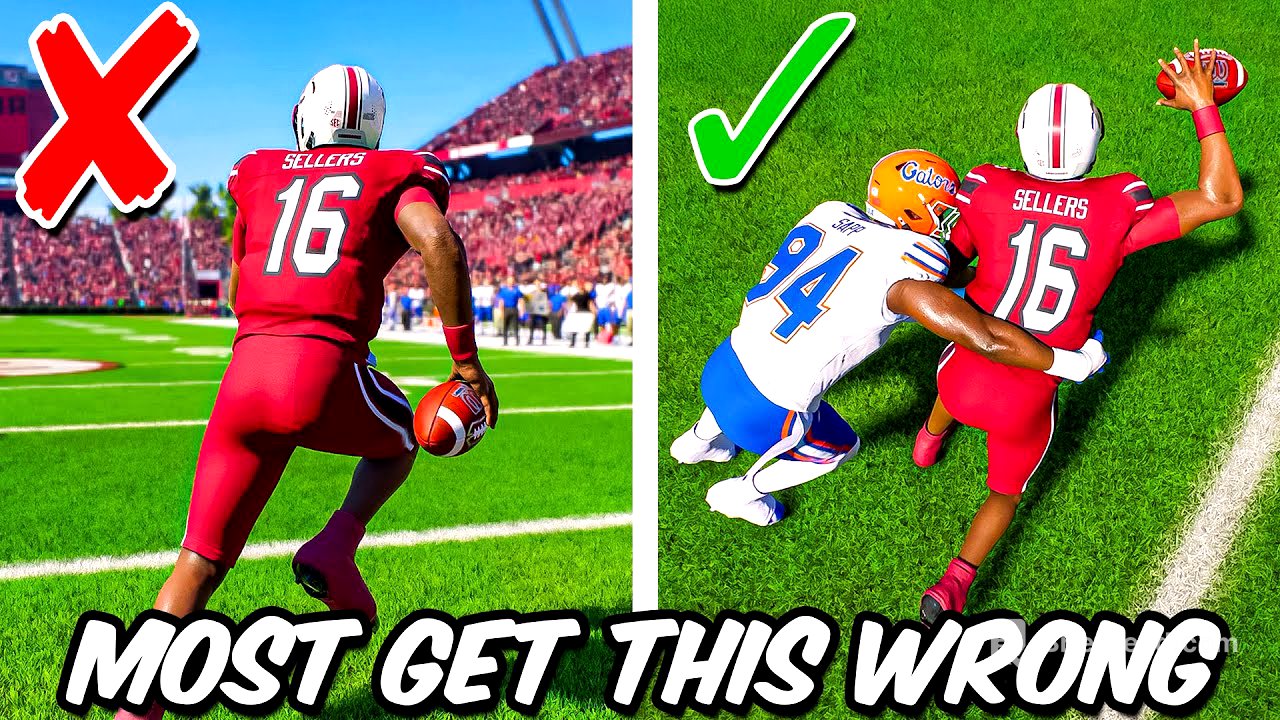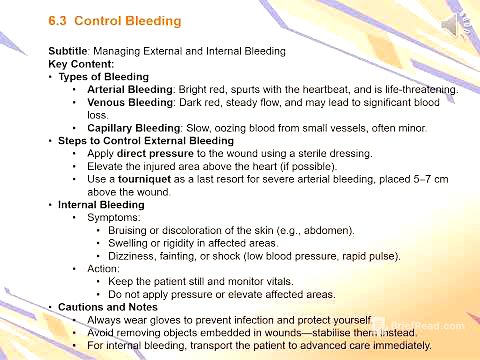TLDR;
This video provides 26 tips and tricks to improve your gameplay in College Football 26, covering both offensive and defensive strategies. It emphasizes the importance of utilizing underneath routes, managing player wear and tear, understanding coaching adjustments, and adapting to stadium pulse. The guide also covers specific techniques such as speed options, D-line stunts, RPOs, and red zone scoring, along with defensive tactics like stopping corner routes and QB sneaks.
- Utilize underneath routes for easy yardage.
- Manage player wear and tear to avoid injuries and rating drops.
- Understand and adjust coaching settings for optimal performance.
Underneath Routes [0:00]
Underneath routes, such as drag routes and flat routes to the running back, are effective for gaining easy yards against both zone and man coverage. Deeper routes can pull zones back, creating space for underneath routes. Drag routes in mesh concepts can exploit man coverage through natural picks. Quick passes are crucial due to block shedding mechanics, preventing sacks and interceptions.
Wear & Tear [1:20]
Managing wear and tear is essential to prevent injuries and maintain player ratings. Quarterbacks should slide to avoid hits, and running backs should aim to go out of bounds. The D-pad can be used to check player ratings and sub players in and out to keep them fresh.
Speed Options [1:58]
Speed options, found in the concept section of playbooks, are effective for easy yardage. Read the defense and pitch to the running back by holding LB/L1 if the QB is pressured. If the running back is defended, keep the ball with the QB. This is especially useful in critical situations for first downs.
Settings [2:47]
Key settings to enable include Defensive Ball Hawk and Defensive Heat Seeker Assist. Setting the heat seeker window size to 200% significantly aids in making tackles, which can be challenging in open field situations.
Coaching Adjustments [3:27]
Important coaching adjustments include setting the option read key to conservative, the option pitch key to aggressive, and both RPO read and pass keys to conservative. These settings help defend against option and RPO plays. Auto flip defensive play call should be on, and quarterback matchups should be on balance to avoid glitches.
Safety Adjustments [5:01]
Safety adjustments are useful against run-heavy opponents. Setting safety depth to close and safety width to pinch can help defend the run. Use cover four plays and shade the defense down for optimal run defense while maintaining pass defense capabilities.
Match Coverage [6:36]
Understanding match coverage is crucial. Plays with a "match" tag in the bottom left corner will use matching principles, where deep zones play man coverage based on formation and routes. To ensure zone coverage, avoid calling match plays or shade the defense up or down to cancel the matching principles. Zone blitzes often use match coverage behind the blitz, which can be canceled by shading the defense.
Zig Routes [8:51]
Zig routes are effective against both man and zone coverage. They beat man coverage and find holes in zone. Hot route inside receivers to zig routes to create better spacing.
Stopping Corner Routes [9:40]
To stop corner routes, adjust zone drops by setting flat zones to 25 yards and calling a Tampa 2 or cover two style defense. This drops curl flats deep to defend the corner route. Mitigate the open flat route by hot routing the outside defender to a curl flat.
RB Routes [10:59]
Utilize running back routes such as the Texas route and the triple option route. The Texas route beats man coverage and gets underneath zone, while the triple option route spots up against zone and releases in or out against man coverage.
Route Stems [11:52]
Custom route stems can enhance route effectiveness. Stem corner routes down to make them break to the outside quicker. Stem slot post routes down to create a flood concept that beats zone and man coverage.
Swat [13:22]
In one-on-one situations, go for swats instead of interceptions. Clicking on and pressing the X button (Xbox) or square button (PlayStation) increases the chance of breaking up the pass.
Shading [13:55]
Shade the defense to counter underneath routes like drags and flats. Shading underneath in cover three or cover four puts hard flats on the field and makes hook curls play more aggressively.
Coverage Shells [14:46]
Coverage shells allow you to dictate how your defense lines up, regardless of the play call. Setting the shell to cover two makes the defense line up as if in cover two, even when calling a different coverage. This makes it harder for opponents to diagnose the coverage.
Quick Sliding [15:40]
Quick sliding is a new mechanic for offensive line adjustments. Flick the right analog stick once for a half slide and twice for a full slide to quickly adjust protection to either side.
Creating Flat Routes [16:44]
Create flat routes by hot routing a tight end to a wheel route. The tight end will run a flat route before going upfield on the wheel, providing a flat route option in formations where dedicated flat routes are unavailable.
Don't Spam RT/R2 [17:29]
Avoid holding the right trigger (RT/R2) behind the line of scrimmage when running the ball, as it triggers faster block sheds. Use the left stick to maneuver and only use the right trigger in the open field. Similarly, avoid holding the right trigger in the pocket with the QB to prevent quicker block sheds.
D-Line Stunts [18:25]
D-line stunts are a new and useful feature. Use them with a four down lineman set. The "right text to man" stunt loops the outside guy on the right, while the "Texas fourman" stunt loops both outside guys inside. These stunts can create pressure and disrupt the pocket.
RPO's [19:45]
Utilize RPOs, particularly RPO read Y flat and RPO read bubble, which are hard to defend. These plays allow you to run the ball or throw a bubble screen or flat route. Defend against these by manually assigning a defender to the route you anticipate being thrown.
Redzone Scoring [20:54]
To score in the red zone, use a curl route on the outside receiver, stemmed down to a hitch, combined with a slant from the other side. Block the running back or get him out of the way. This combination often creates a window to hit the slant against zone coverage.
Stopping QB Sneak [21:42]
To stop the QB sneak, use goal line man defense. Pinch the D-line and crash them down. User control a defender to help fill the gap. This should disrupt the QB sneak most of the time.
Depth Chart [22:17]
Manage your depth chart to ensure players with high speed and valuable abilities are on the field. Prioritize speed and abilities over overall rating, especially for wide receivers and defensive players.
Abilities [23:23]
Abilities are as important as ratings. For QBs, look for "on time" and "DOT" to prevent inaccurate passes. For running backs, "shifty," "side step," and "360" help fake out defenders. For wide receivers, "shifty" and "takeoff" are effective. Pass rushers benefit from "quick jump," "duress," and "pocket disruptor."
Stadium Pulse [24:35]
To manage stadium pulse, use plays that don't require hot routes, such as RPO reads, speed options, and underneath routes. Focus on simple, easy plays to pick up yards and quiet the crowd. Break the huddle quickly to get one hot route off if needed.
How To Roll Out [26:11]
To improve QB rollouts, slide the offensive line to the side you want to roll to using the quick slide mechanic. Double team the outermost edge rusher to break containment easily.
Stopping Roll Outs [27:02]
To stop QB rollouts, put a fast linebacker or D-lineman on a QB spy. The spy will follow the QB and prevent him from outrunning the defense.









